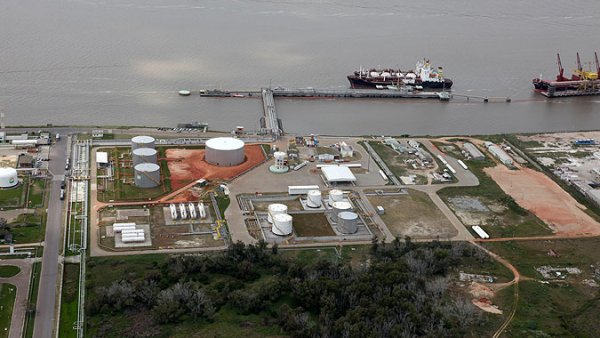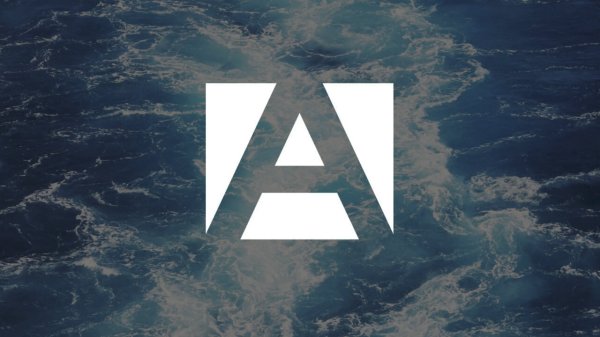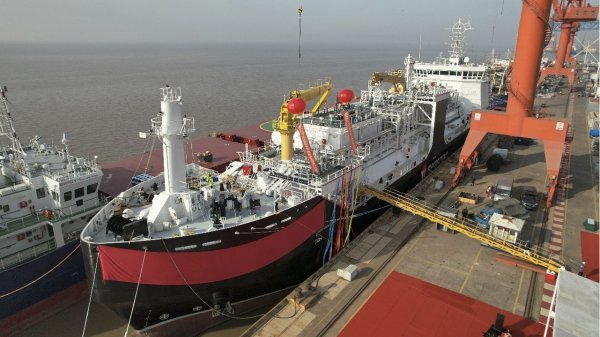'Vastly improved' specs for lithium ion battery systems
The Corvus module will now be designated as AT6700 to reflect the validated energy capacity of 6.7kWh.
Canada's Corvus Energy has validated and is restating the product specifications for its "vastly improved" lithium ion battery systems, reflecting that the system has double the RMS power capability and substantially more energy capacity than previously reported.
As part of its ongoing testing programme, Corvus worked closely with the Laboratory of Alternative Energy Conversion (LAEC) at Simon Fraser University, Canada, on an extensive series of tests of the performance and characteristics of the AT6500 platform.
Corvus has the largest installed base of industrial lithium ion batteries in the maritime industry, including ferries, tugs, offshore supply vessels and port cranes. To recognize these superior specifications, the AT6500 model name will now be revised to AT6700 for the product platform.
Corvus and its cell supplier's programmes of continuous improvement for the AT6500 have played an important role in the improved specification, particularly for Corvus's liquid cooled module which features the Corvus proprietary active cooling system.
In a statement, Corvus explained that a key to getting maximum battery performance is thermal management, which helps the battery system to 'keep its cool' during the most demanding operational requirements. Active cooling is controlled by the battery management system (BMS) software that continually measures and reports cell temperatures to an advanced liquid cooling system that significantly lowers operating temperatures, safeguarding the batteries from running too hot.
"Corvus is continually improving its BMS for new projects and deploying these improvements to its existing customers. The Corvus AT6700 has a 10C peak discharge and 3C indefinite RMS rating. These enhancements show a continuing commitment to product development and a passion for innovation which reinforces and strengthens Corvus' industry-leading position in marine energy storage systems. These improvements also provide our existing customers with the opportunity to get more from their ESS," Corvus said.
"We are committed to ceaseless product innovation and testing, inspired by the feedback and requirements of our customers," said Andrew Morden, President & CEO, Corvus Energy. "Actively listening to our customers regarding their operational needs drove the testing program and the continuous improvement of the AT6500, now available as AT6700. We will continue our industry leading innovation with the introduction of our next generation lithium ESS [energy storage system] products later this year. We are the only lithium ion battery company with a substantial base of propulsion systems operating in the field, more than 40 ESSs on vessels and port cranes all over the world, and it is this real world operational intelligence in combination with our rigorous testing program that enables Corvus to specifically design its current and future battery systems to the needs of operators."
Corvus engineers have designed an ESS tailored to customer specifications using operational load profiles and other requirements without the expense of custom engineering. It is the only purpose-designed industrial lithium-ion battery system with four marine Type Approvals from Lloyds Register, DNV-GL, ABS and Bureau Veritas (pending). It is scalable from 6.5kWh at 50VDC to multiple megawatt-hours at up to 1100VDC.
A number of large commercial hybrid and electric vessels employ a Corvus ESS, including the world's first all-electric ferry, the Norled Ampere, which crosses the Sognefjord, Norway's largest fjord, 34 times per day.
As part of its ongoing testing programme, Corvus worked closely with the Laboratory of Alternative Energy Conversion (LAEC) at Simon Fraser University, Canada, on an extensive series of tests of the performance and characteristics of the AT6500 platform.
Corvus has the largest installed base of industrial lithium ion batteries in the maritime industry, including ferries, tugs, offshore supply vessels and port cranes. To recognize these superior specifications, the AT6500 model name will now be revised to AT6700 for the product platform.
Corvus and its cell supplier's programmes of continuous improvement for the AT6500 have played an important role in the improved specification, particularly for Corvus's liquid cooled module which features the Corvus proprietary active cooling system.
In a statement, Corvus explained that a key to getting maximum battery performance is thermal management, which helps the battery system to 'keep its cool' during the most demanding operational requirements. Active cooling is controlled by the battery management system (BMS) software that continually measures and reports cell temperatures to an advanced liquid cooling system that significantly lowers operating temperatures, safeguarding the batteries from running too hot.
"Corvus is continually improving its BMS for new projects and deploying these improvements to its existing customers. The Corvus AT6700 has a 10C peak discharge and 3C indefinite RMS rating. These enhancements show a continuing commitment to product development and a passion for innovation which reinforces and strengthens Corvus' industry-leading position in marine energy storage systems. These improvements also provide our existing customers with the opportunity to get more from their ESS," Corvus said.
"We are committed to ceaseless product innovation and testing, inspired by the feedback and requirements of our customers," said Andrew Morden, President & CEO, Corvus Energy. "Actively listening to our customers regarding their operational needs drove the testing program and the continuous improvement of the AT6500, now available as AT6700. We will continue our industry leading innovation with the introduction of our next generation lithium ESS [energy storage system] products later this year. We are the only lithium ion battery company with a substantial base of propulsion systems operating in the field, more than 40 ESSs on vessels and port cranes all over the world, and it is this real world operational intelligence in combination with our rigorous testing program that enables Corvus to specifically design its current and future battery systems to the needs of operators."
Corvus engineers have designed an ESS tailored to customer specifications using operational load profiles and other requirements without the expense of custom engineering. It is the only purpose-designed industrial lithium-ion battery system with four marine Type Approvals from Lloyds Register, DNV-GL, ABS and Bureau Veritas (pending). It is scalable from 6.5kWh at 50VDC to multiple megawatt-hours at up to 1100VDC.
A number of large commercial hybrid and electric vessels employ a Corvus ESS, including the world's first all-electric ferry, the Norled Ampere, which crosses the Sognefjord, Norway's largest fjord, 34 times per day.

|
IMO approves pricing mechanism based on GHG intensity thresholds
Charges to be levied on ships that do not meet yearly GHG fuel intensity reduction targets. |
|
|
|
||

|
VARO Energy expands renewable portfolio with Preem acquisition
All-cash transaction expected to complete in the latter half of 2025. |
|
|
|
||

|
NYK trials biofuel in milestone coal carrier test
Vessel is used to test biofuel for domestic utility company. |
|
|
|
||

|
H-Line Shipping orders LNG bunkering vessel
Vessel with 18,000-cbm capacity to run on both LNG and MDO. |
|
|
|
||

|
How to engineer and manage green shipping fuels | Stanley George, VPS
Effective management strategies and insights for evolving fuel use. |
|
|
|
||

|
Swedish government bans scrubber wastewater discharges
Discharges from open-loop scrubbers to be prohibited in Swedish waters from July 2025. |
|
|
|
||

|
MAN Energy Solutions achieves 100% load milestone for ammonia engine
Latest tests validate fuel injection system throughout the entire load curve. |
|
|
|
||

|
Petrobras secures ISCC EU RED certification for B24 biofuel blend at Rio Grande
Blend consisting of 24% FAME is said to have been rigorously tested to meet international standards. |
|
|
|
||

|
Stolt-Nielsen to fully control Avenir LNG with acquisition
Share purchase agreement to buy all shares from Golar LNG and Aequitas. |
|
|
|
||

|
Bureau Veritas supports launch of CIMC SOE's LNG bunkering vessel
Handover of Seaspan Energy's cutting-edge 7,600-cbm vessel completed. |
|
|
|
||
Related Links
- · World's first fully electrical ferry wins award [Insights]
- · Engine manufacturer in tie-up with Li-ion battery specialist [Insights]
- · Agreement to deliver battery system to world's largest electric ferryboat [Insights]
- · Electric system supplier for world's largest fully electric ferryboat is named [Insights]
- · Imtech wins contract to supply propulsion system for hybrid ferry [Insights]
- · Canada [Directory]

